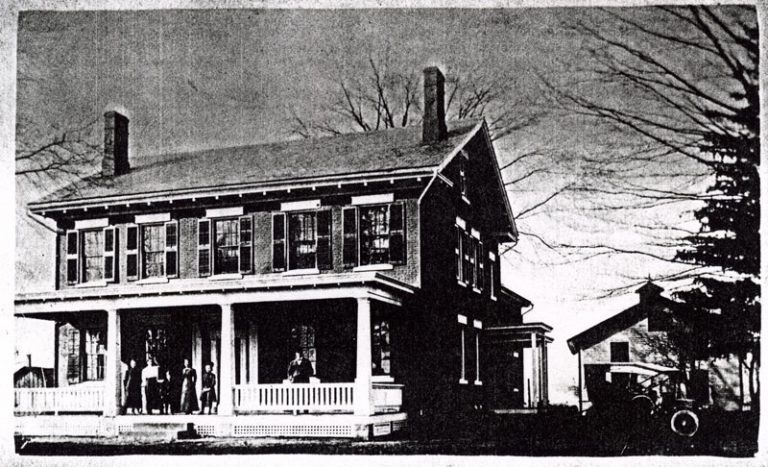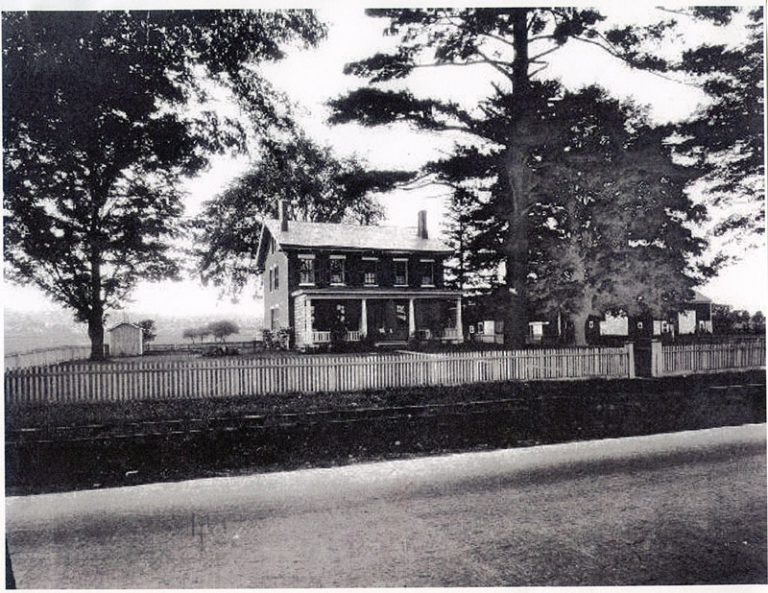Venango Valley Inn and Golf Course

After disputes with local Native American tribes were resolved, the two men returned on horseback with their families in 1796. They settled along the river the Indians called “Wenango,” which is the Seneca word for “mink.” The name of this river was changed to “French Creek” by George Washington, who noted several French forts as he traveled north to Fort LeBoeuf via this route in 1753.
In 1821 Siverling purchased 180 acres from the Holland Land Company, where Venango Valley Inn & Golf Course is now located. In 1833 the property was purchased by John Kleckner, a good friend of Daniel Seager, who settled the village of “Saegertown.” Kleckner also surveyed a village plot and named it Klecknerville.
In 1852 the village was incorporated and the name was changed to Venango.
In 1838, Kleckner began building a “two story, 14 room brick mansion” as it was referred to in later tax documents. This handsome, federalist style building was constructed with brick made by Kleckners’s son Matthias, who had a brick kiln in Cussewago Township.
In 1864, Elizabeth McClintock Tarr and her husband James B. Tarr purchased Kleckner’s home and for years it was known as the “Tarr Farm”.
The Tarrs had recently sold their farm in the oil region and rights to the largest oil well in the Oil Creek Valley was discovered just a short time before for $2 million (over $33 million in today’s funds).
Tarr owned both this property and a “winter home” on Diamond Park in nearby Meadville. The etching dated “August 19, 1868” on the windowpane in the front dining room was most likely done during the Tarr’s remodeling of the house.
James Tarr died in 1871 and Elizabeth in 1872, and the property was sold to settle the estate in 1884. The Titusville Herald described Tarr as follows:
A dispatch from Meadville yesterday informs us that James Tarr, of Tarr farm celebrity, died at his residence on Monday last. Five or six years ago, no man in Oil Creek was more familiarly known. He belonged to the class of old residents who found themselves made suddenly rich by the possession of oil territory, whose unthrifty soil has for many years previous afforded them but a scanty subsistance.
Mr. Tarr was a son of John Tarr, one of the oldest residents of Cherrytree township, Venango county, where he still resides at the advanced age of seventy-five years. James Tarr was about forty-six years of age. He purchased the celebrated Tarr farm about five years before the oil excitement began, and married the widow McClintock. He possessed but limited means, and carried on the usual farm labors, living frugally, and like many other Oil Creek agriculturists, occasionally varying his occupations by engaging in the business of rafting lumber to Pittsburgh and other points.
Mr. Tarr was a representative man of his class-a stalwart, muscular, rough and ready customer, who beneath a rough exterior carried a warm heart and generous nature, though of a somewhat eccentric disposition. There have been some notable incidents in his career illustrating these characteristics, and various facetious anecdotes concerning him have traveled the rounds of the
press.
In the year 1865, Mr. Tarr removed to Meadville, where he built an elegant mansion fronting on Court house square. In 1867, he announced himself an independent candidate for Associate Judge in this county, but obtained but very few votes. He leaves a wife and several children, and his father and several of his brothers and sisters reside in Venango county.
Titusville Herald, Wed., 22 Nov 1871, p.3, Titusville, Pa.


In 1968 Kemp and Erath, builder of Arnold Palmer’s Laurel Valley Golf Course in Ligonier, Pennsylvania purchased the Inn and the land and built the 18-hole course originally called the Canadian-American. In the 1970s Joe and Mary Petrucelli further developed the golf and the restaurant business and left a legacy of fine Italian recipes. Today we are proud to carry on the rich tradition of this fine old establishment and honor the legacies of multiple national historical figures.